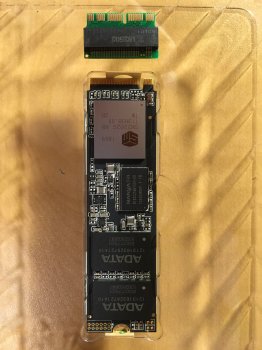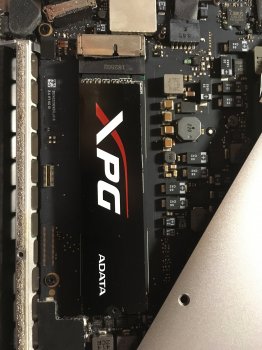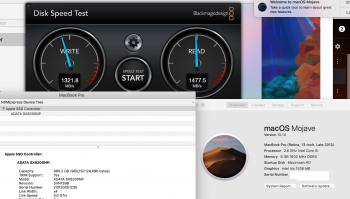This is regarding a late-2013 15" MacBook Pro with OWC Aura SSD; this might work with an M.2 adapter, or it might not. I don't have an adapter to test it with yet.
I was able to update bootrom on this Mac manually using the following process (make sure the computer is connected to the charger):
Download or extract FirmwareUpdate.pkg from the macOS installer or updater
Then in Terminal:
/usr/sbin/pkgutil --expand /path/to/FirmwareUpdate.pkg /tmp/FirmwareUpdate # Extract the package
cd /tmp/FirmwareUpdate/Scripts # Change directory
sudo /usr/libexec/FirmwareUpdateLauncher -p "$PWD/Tools" # Stage SMC and other updates
sudo /usr/libexec/efiupdater -p "$PWD/Tools/EFIPayloads" # Stage EFI update
sudo reboot # reboot, keep computer powered and be patient!
If successful, the computer will reboot, sit at a black screen for a bit, show a progress bar that slowly fills up, then reboot again and boot into OS.
If the update is then attempted a second time, it will indicate that the update is not necessary on the Terminal if it was successful.
(This is based on
https://forums.macrumors.com/thread...-fix-coming-soon.2072666/page-2#post-25130045 ; Apple removed the update script in later versions of the FirmwareUpdate.pkg though.)




